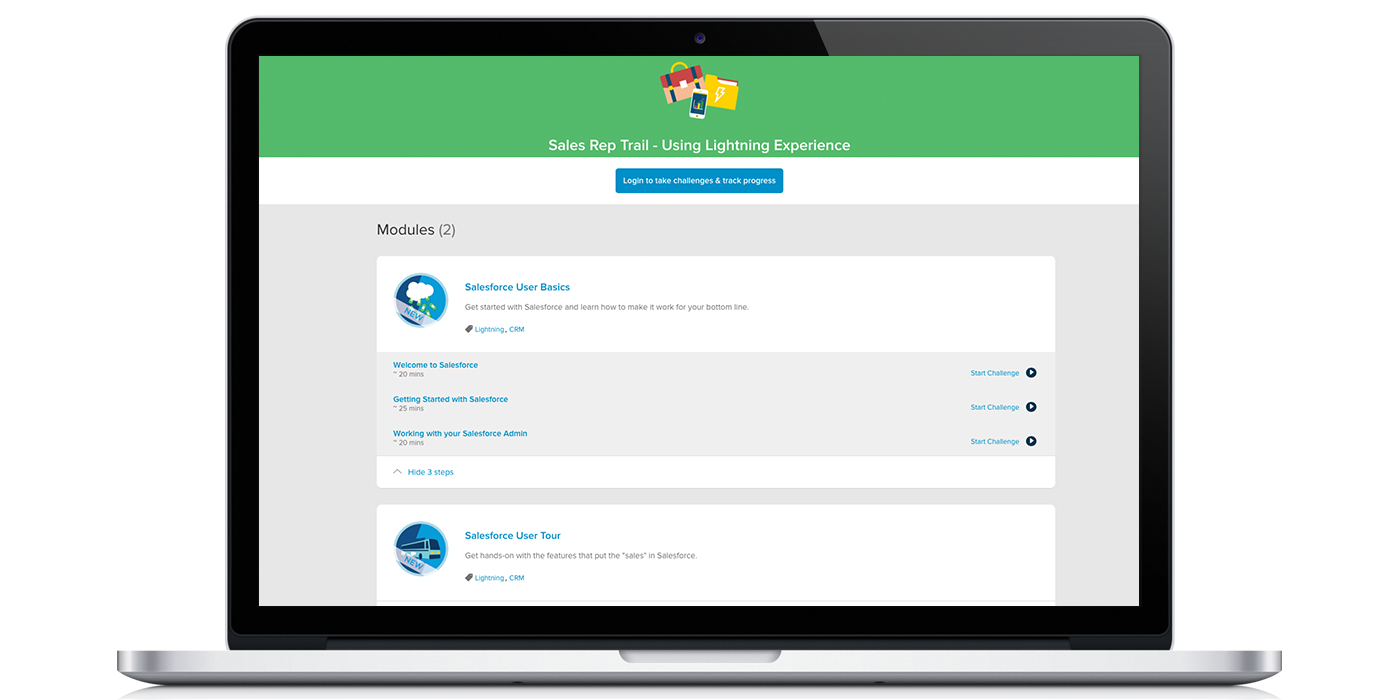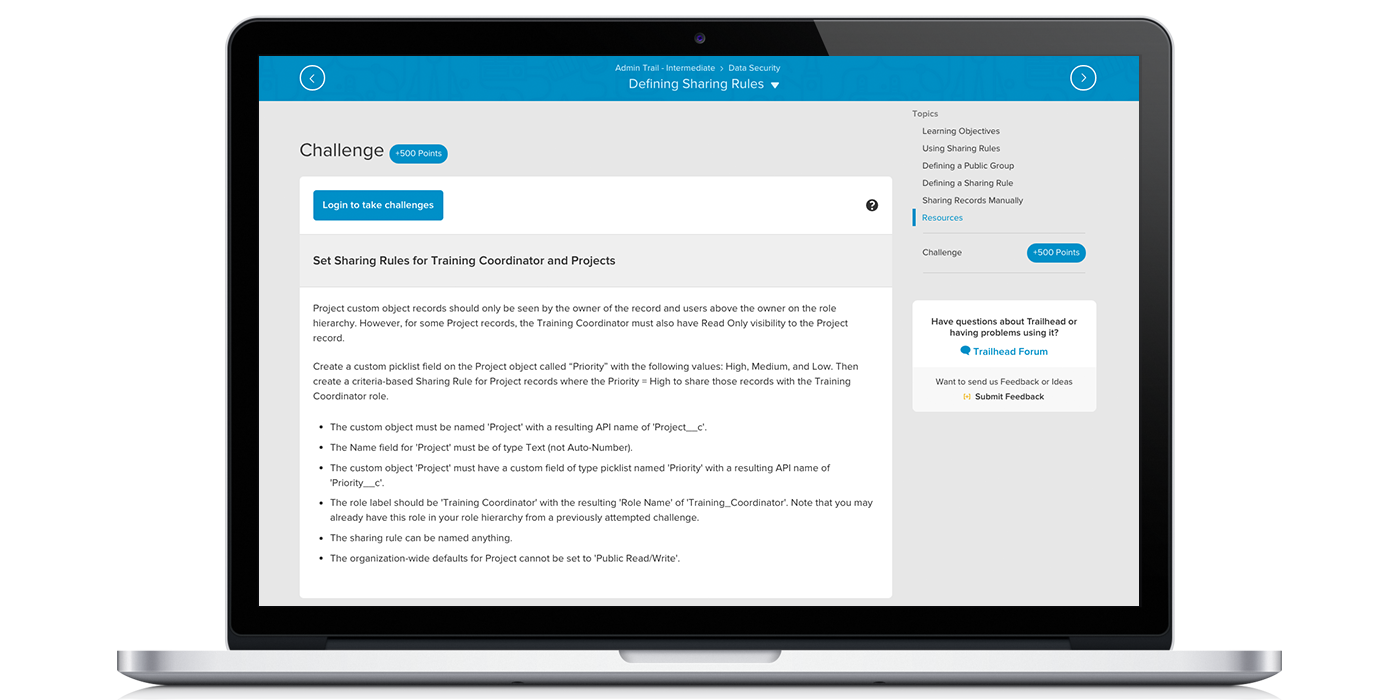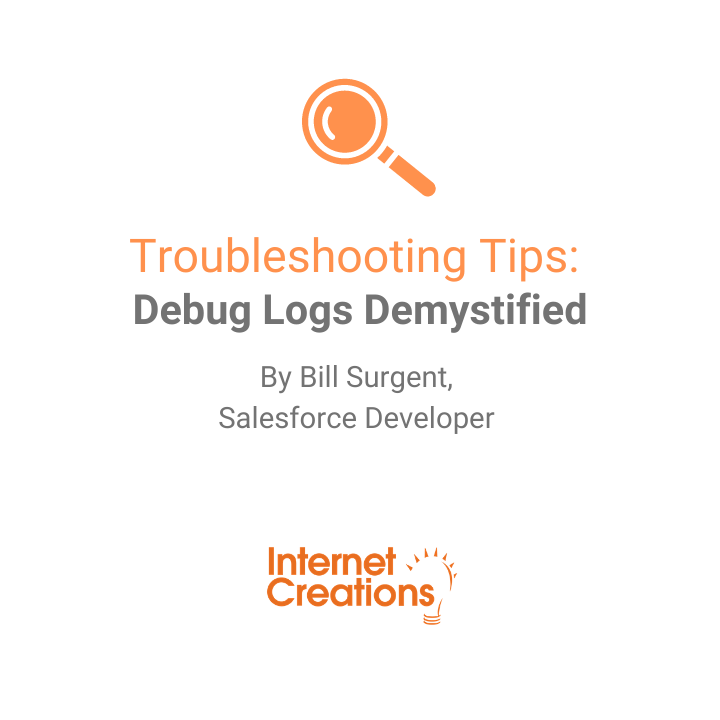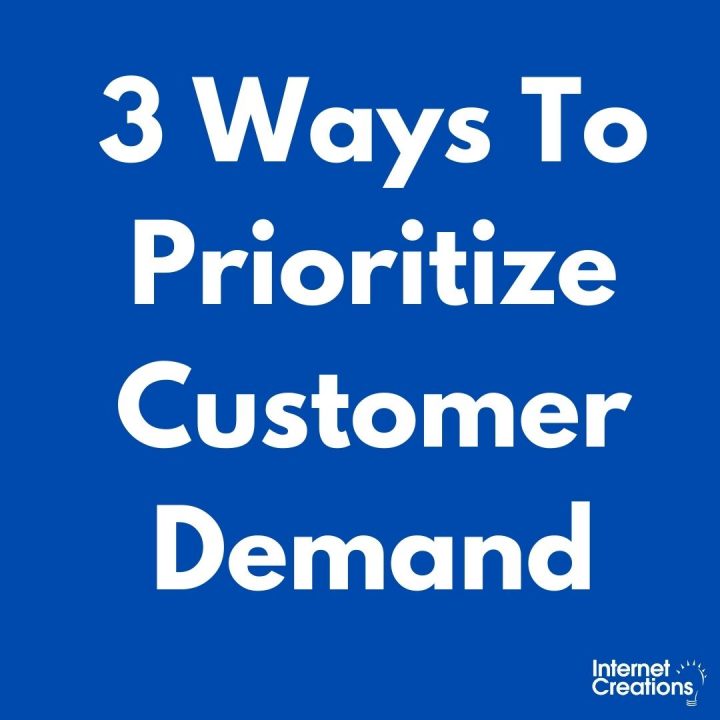6 Tips for Making the Most of Your Salesforce Trailhead Time
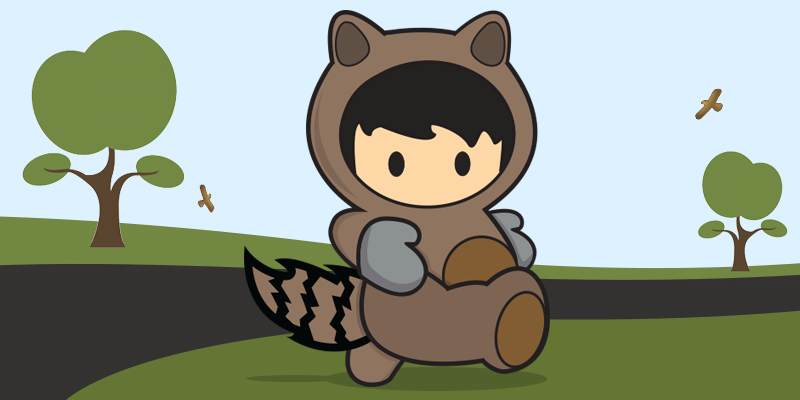
Wouldn’t it be great if you had all the time you wanted for Trailhead? Think of everything you could learn about Salesforce—if you only had the time.
With competing demands across work and personal lives, it can be difficult to find the time to focus on Trailhead. So how can you make the most of the time that you do have for Trailhead?
These six tips will help you stay on track so you can use your Trailhead time productively.
1. Figure out how much time you can commit (and stick to it).
Trailhead isn’t just a commitment of time; it’s a commitment you make to yourself.
All cheese aside, you do Trailhead because you want to improve your Salesforce skills, right? This requires time. Whether it’s five minutes or five hours, you need to determine how much time you can commit to Trailhead and to be consistent with it. The person who will benefit the most from this is yourself.
Make a Trailhead appointment with yourself (or others if you’re trailblazing with a group) and keep it. Dedicate your Trailhead time to only Trailhead. Create conditions that help you focus. A quiet, distraction-free place is ideal but not always possible, especially when you’re in the office. At the least, try disabling any device notifications and listening to music (our Director of Marketing Anthony Pica focuses better to music without lyrics) or using noise-cancelling headphones.
The time estimates associated with each unit can help you with managing your time. Just remember that they are estimates! Take as much time as you need to learn the content.
2. Understand the content structure.
Trailhead content is structured so that it’s easy to digest. Trails are made up of modules, and modules are made up of units. The smallest chunk of content, units have learning objectives and challenges. (More on this in the Trailhead FAQ.)
Once you understand how Trailhead content is organized, you can tackle content in the way that enables you to make the most of your time. Perhaps you want to take on an entire trail in one sitting, or maybe you only have time to do one module. You even may benefit from breaking units into smaller “micro units” of content. (Note: The clear headings used for each topic in each unit make this easy!)
3. Review the learning objectives.
Well-articulated, specific, and measurable learning objectives are not just a sign of sound instruction design and development; they’re also a learner’s best friend.
Each Trailhead unit has learning objectives, which are great for helping you to focus your learning efforts. Good learning objectives tell you what you should be learning. They tell you what you will be able to do when you’ve completed the unit (what you will get out of your learning). They also let you know what you’ll be assessed on in the challenges.
4. Don’t skip content. Read it.
If you’re even slightly familiar with Salesforce, it’s likely that you’ll run into Trailhead content that covers topics you think you already know. At those times, it’s tempting to mentally “check out” and glance over text without really reading it.
In these cases, at least skim the content. Don’t skip it completely because you could be missing key points or new ways of articulating and thinking about familiar topics. When you find something that is new, read (and re-read) it carefully to make sure you understand the concept.
And if there’s nothing new to you at all, that’s not necessarily a bad thing. You’ve confirmed (or refreshed) your understanding and know that you can confidently move on to the next unit.
5. Complete the challenges seriously.
Yes, challenges are hard. But you should still do them seriously.
Assessment is an important part of learning. How else will you know that you learned what you were supposed to learn?
As our App Support Specialist Joe Reale realized, the challenges in Trailhead are there to check your understanding and test your knowledge. Taking your time with the challenges helps you make sure that you really understand the concepts and can apply them outside of Trailhead’s learning environment. And if you do get something incorrect, you’re able to see where you went wrong and re-take the challenge.
6. Participate in the Trailhead community.
There are several ways you can engage with the Trailhead community to share your progress, gain knowledge, and help your fellow trailblazers.
If you have questions or want to share your knowledge, you can post in the Trailhead Forum in the Salesforce Developer Community.
Many areas also have Salesforce Developer and User Groups that meet up for Trailhead learning. Check in with your local group to see what they’re doing with Trailhead.
Don’t forget to leverage social media! In addition to sharing your progress, you can connect with others blazing their own trails and with the Trailhead team. Two of our favorite #Trailhead influencers to follow on Twitter include Chris Duarte (Trailhead Managing Editor) and Adam Purkiss (Trailhead Salesforce Developer Relations).
BONUS: Keep the end goal in mind.
One of the most motivating aspects of Trailhead is sharing your progress—as measured by the badges you earn—on social media.
But as fun as social sharing is, keep in mind that Trailhead’s real purpose is to help you build your Salesforce skills so you can apply what you learn to the work you do with Salesforce.
Don’t get discouraged if you feel that you’re not earning badges as quickly as others in the Salesforce community. Focus on what you learn and on how your new knowledge is helping you to leverage Salesforce more productively.
Try out these tips, and you’ll be well on your way to making the most of Trailhead!
Have additional tips for Trailhead? Share them in the comments!
- Internet Creations Announces Expansion with New Office in Dallas, Texas - February 25, 2016
- Q&A on the Salesforce Spring ‘16 Release Notes [Event Recap] - February 3, 2016
- Explore the Salesforce Spring ’16 Release Notes with the NJ User Group - January 7, 2016
